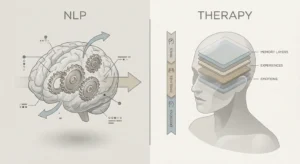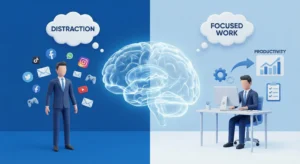Have you ever thought, “Why do I keep doing this?” Same argument. Same hesitation. Same result.
We all have patterns ways of thinking, reacting, and making decisions that run on autopilot. Most of the time, we don’t even notice them. We just live inside them.
That’s where self-awareness comes in. It’s the ability to pause, step back and actually see what’s going on beneath the surface. Without it, you can build better habits or chase bigger goals but you’ll likely end up repeating the same outcomes.
In this post, we’ll explore how self-awareness helps you break those hidden patterns and create real, lasting growth, whether you’re leading a team, coaching others, or just ready to stop getting in your own way.
Why Self-Awareness Comes First
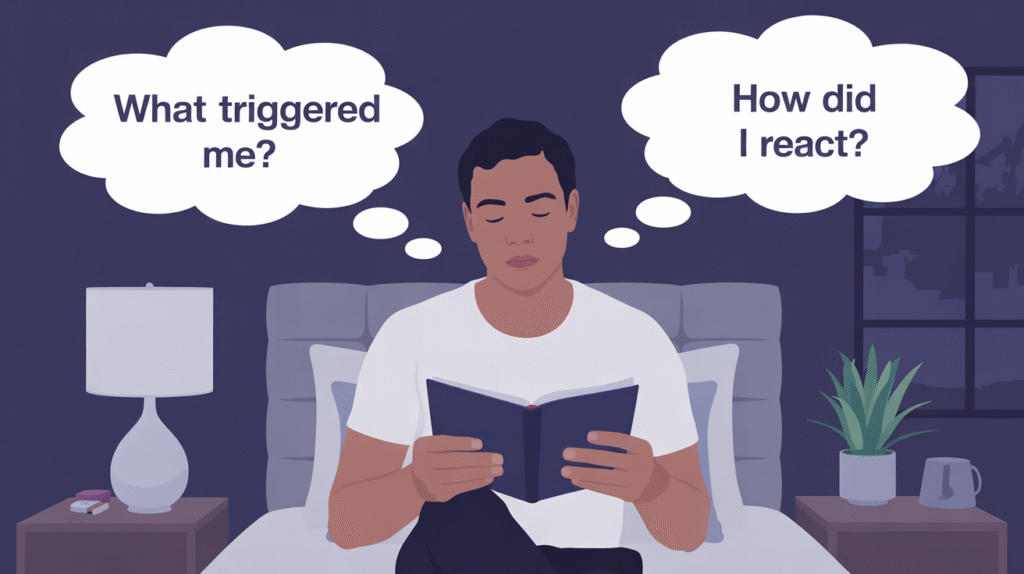
Before we can change anything, we need to notice it. You can’t interrupt a pattern you’re not aware of. Self-awareness helps us:
- Recognize emotional triggers and stress responses
- Understand how past experiences shape current behaviors
- Spot limiting beliefs that hold us back
Without self-awareness, we repeat the same mistakes, justify them with surface-level excuses and stay in cycles that limit growth.
What Are Unhelpful Patterns?
Unhelpful patterns are automatic responses that might have served us once but now limit us. They can show up in how we communicate, lead, work or relate to others. For example:
- A leader who avoids conflict may struggle to address underperformance.
- A coach who over-delivers might burn out trying to prove their worth.
- An entrepreneur who fears rejection may avoid taking bold risks.
These patterns often feel “natural,” but they’re learned behaviors. And they can be unlearned with awareness.
How to Develop Self-Awareness
Self-awareness isn’t a personality trait. It’s a skill you can strengthen. Here are a few ways to build it:
Slow Down and Reflect
In a busy world, awareness gets drowned out by noise. Take five minutes at the end of each day to ask yourself, “Where was I at my best today? Where did I fall into old habits?”
Ask Better Questions
Self-reflection is only useful if it’s honest. Try questions like:
- What emotion showed up most today?
- What situation triggered a strong reaction?
- What story am I telling myself in that moment?
Look for Repetition
If you keep hitting the same walls, look for the common thread. Awareness grows when we identify patterns across different areas of life.
Seek Feedback
Sometimes, we need others to point out what we can’t see. Ask trusted colleagues or mentors, “What’s something I might not realize I do?”
Use Tools Like Coaching and NLP
Coaching and NLP techniques help uncover the deeper structure behind behavior. With guidance, you can shift your internal scripts more effectively.
How to Break Unhelpful Patterns and Grow
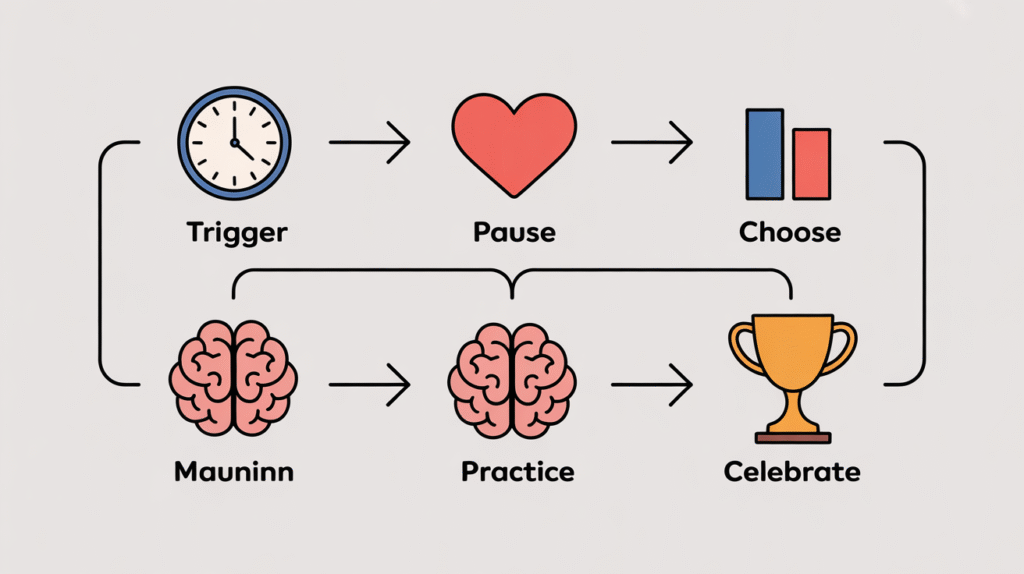
Awareness is only step one. Growth happens when we take action. Here’s how to start breaking old patterns:
Identify the Trigger
Most patterns begin with a cue: a feeling, a situation or even a thought. Catching the trigger helps you interrupt the cycle.
Pause Before Reacting
Instead of defaulting to the usual response, pause. That pause is your opportunity to choose a different outcome.
Choose a Better Response
Ask yourself: “What would serve me better in this moment?” Replacing an old habit with a more useful one takes intention, not perfection.
Reinforce the New Pattern
Practice the new response consistently. The more you act from this new place, the more it becomes part of your identity.
Celebrate Small Wins
Even small shifts matter. Every time you notice a pattern and choose differently, you’re growing. Acknowledge that.
What Happens When You Build Self-Awareness?
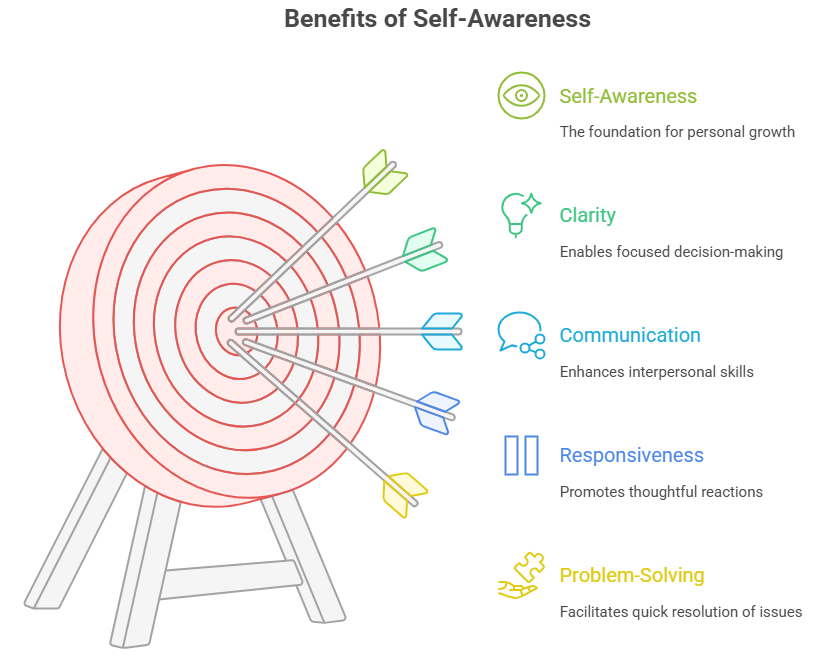
Let’s make this practical. Here’s what can shift when self-awareness becomes part of your toolkit:
You respond instead of react.
You stop saying things you regret. You stop making decisions based on emotion alone. You learn to pause, assess and respond with purpose even under pressure.
You become a better communicator.
When you understand your internal dialogue, you also become more attuned to others. You catch the tone, the hesitation and the real question under the question. That’s powerful in leadership, coaching, sales anywhere people are involved.
You get unstuck faster.
Instead of spiraling for weeks, you start asking, “What am I doing here that’s keeping this going?”
That single question has helped my clients break through everything from revenue plateaus to toxic team dynamics.
You lead with clarity.
Whether you’re guiding a business, a team, or your own decisions clarity is your most valuable asset. Self-awareness gives you that clarity. You’re no longer chasing symptoms; you’re addressing root causes.
Applying This to Business, Coaching, and Leadership
In high-performance environments like entrepreneurship, coaching and leadership, self-awareness is a competitive edge. It helps you:

- Communicate more effectively
- Lead without micromanaging
- Coach with empathy and purpose
- Make better decisions under pressure
You become someone who can self-correct quickly, guide others more honestly and operate from a place of growth not fear or habit.
Final Thoughts
If you’re feeling stuck, repeating the same mistakes, or holding back from your next level of growth, don’t start by changing everything around you. Start by paying attention to what’s happening inside you.
Self-awareness is the foundation of meaningful change. It helps you break out of unhelpful loops, lead with clarity, coach with confidence, and make choices that move you forward.
Because real growth doesn’t start with doing more, it starts with seeing more.


